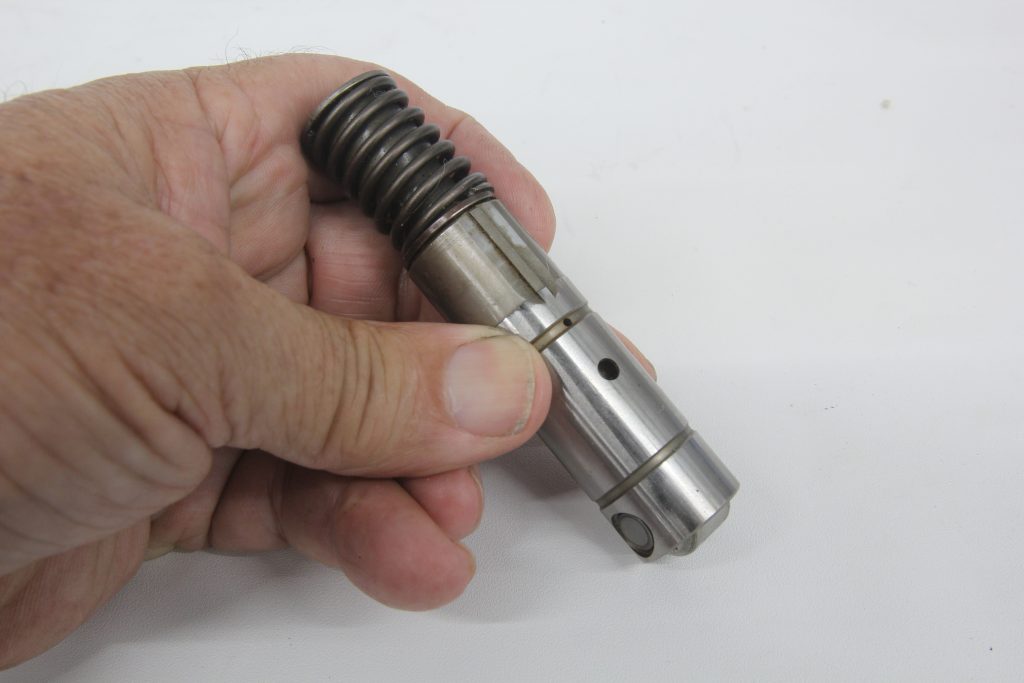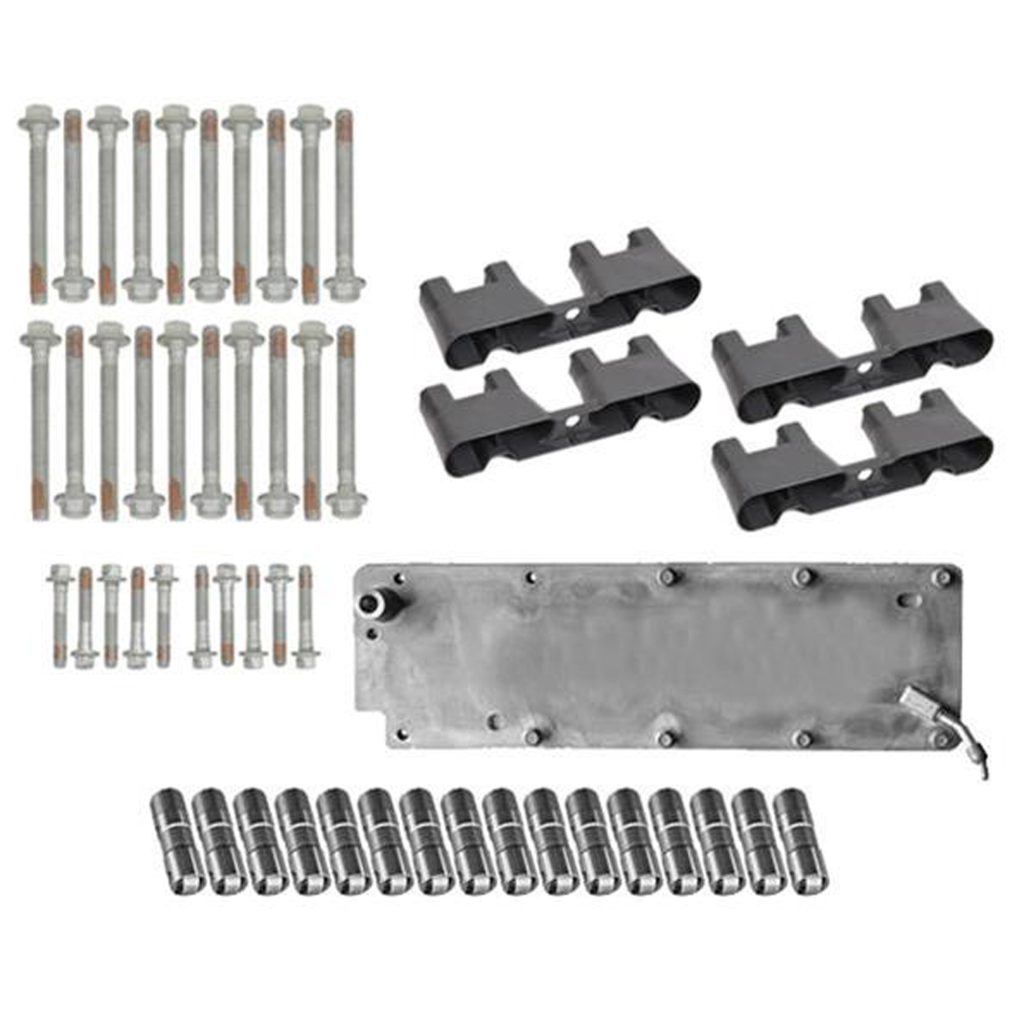I have a 2007 5.3L truck motor that came out of a Tahoe. I want to go through the engine and update it for use in a hot rod I’m building. I’m pretty sure the engine came with that DOD stuff where it disables four cylinders. I want to eliminate that cylinder delete system altogether.
Do I have to modify the engine or can I just change the lifters?
Thanks.
D.B.
GM began using the cylinder delete system in 2005 in several of its SUV vehicles like the Tahoe. GM called this system Active Fuel Management (AFM) and designed the system to deactivate both valves on four cylinders to improve fuel mileage. This is accomplished by using lifters that use a commanded oil pressure circuit to deactivate the hydraulic lifters. This system is designed to allow the lifter to still follow the camshaft lobe but internally the piston inside the lifter does not move the pushrod to operate the valves. This essentially converts each lifter into what is sometimes called a lost motion device.
OnAllCylinders offers a comprehensive article on a vehicle equipped with AFM and how to go about converting an engine, which allows us to touch on the main points. To get more details, check out that AFM delete story here.

Eliminating AFM from the engine will require several significant modifications. The most important is that all 16 lifters should be replaced, not just the eight that are active fuel management. This is just cheap insurance. The camshaft must also be changed because AFM uses two different cam lobe designs—one for AFM and one for non AFM cylinders.
Plus, the AFM lifter valley cover includes fittings for the cast-in AFM towers in the lifter valley. These towers direct oil pressure to each of the AFM lifters and is controlled by what GM calls the LOMA or Lifter Oil Management Assembly. It’s best to replace this manifold when eliminating AFM.
When GM designed the LS engine, they tightened up many places to make the engine take up less room and be more compact. Part of this design now requires the technician to remove the cylinder heads to replace the lifters. This is a major hassle, but it’s part of the design.
The bottom line is that you must remove the heads to remove the lifters. This means to supplement this kit you will also need new head gaskets. As mentioned, it is wise to replace all the lifters instead of just the eight AFM lifters. Summit makes a kit that includes 16 lifters, all new lifter holders, an LS3 style lifter valley cover, and head bolts that makes the kit nearly complete. You will still need head gaskets, a replacement camshaft and probably new timing set and front timing cover gasket.

A camshaft is not included because since each customer will likely have his own preferences when it comes to valve timing. Some will just want a stock cam while others may want to include a performance camshaft with more lift and duration.
If you go with a performance three-bolt cam, this will require a three-bolt timing gear as well as a new chain. The stock AFM engines used a single bolt cam. Either camshaft can be used but the cam timing gear must match the camshaft bolt configuration. One area that can be confusing is that a single bolt cam has three cutouts in the face but still only uses the large single bolt to attach so make sure you order the right front timing gear and set.
This change to AFM was part of the upgrade of the original Gen. III LS engine to what is now commonly referred to as Gen. IV engines using the 58x shutter wheel on the crankshaft. These Gen. IV engines also moved the cam timing sensor from the rear of the engine to the front timing cover. So if you are ordering a new camshaft timing set, be sure that the gear is compatible with a 58x engine that uses the front mounted cam sensor. You cannot use a Gen. III timing gear because it does not have the proper sensor lugs built into the gear that is required for a Gen. IV engine.
It’s also recommended that when deleting AFM that you also add a GM-designed cap over the pressure relief valve located in the oil pan. This valve is designed to dump excess oil pressure when the AFM is not engaged. This valve has been shown to spray oil inside the crankcase which can cause excessive oil usage on some engines. The cap is designed to still allow the oil pressure relief valve to work, but to prevent the oil from spraying inside the crankcase.
It’s also a good idea to replace the oil pickup O-ring just to prevent a leak at this juncture since this can cause low oil pressure issues if the O-ring becomes brittle from extended use.
Another important step is that the engine computer software will need to be modified to delete the use of AFM. If this is not done, the dash will light the check engine light with a fault code. There are several companies online that can accomplish this task for you but will require you to send the ECU to them.
There are a few other details that you may have to deal with but these are the main points that will need to be addressed. The advantage is with the engine on a stand, these change will be much easier to produce. Good luck with your swap.
GM LS AFM Delete Parts List
- AFM Delete kit, (no camshaft) – CMB-09-0026
- Camshaft, Chevrolet Perf., stock timing – NAL-12689035
- Oil pressure relief valve cap – NAL-12639759

Uh, why does the cutaway photo show a Gen V’s HPFP?
Good catch – we made the update. Appreciate the heads up!
I have 2011 GMC 1500, 5.3 with AFM, 4×4 used for normal driving only. I’m age 77. For several years I sometimes hear the ticking sound at start up after the engine idles down. More often I don’t hear it. It goes away after I’ve driven a mile or so. The truck will often sit for days without being driven. I’m thinking about a AFM disabler. – probably the Ranger brand. But I’m not sure if that would stop the ticking, or not. On your website I read : As long as a lifter hasn’t started to fail, you can get by with a less-expensive disabler as preventative maintenance. How will I know if a lifter has started to fail? The truck runs good. I couldn’t find a place to ask this question, so I hope asking here is ok.
Hey Jimmy, thanks for reading – Without hearing the sound in person or taking apart the valvetrain for a visual inspection, a failed lifter can also manifest itself in other ways, like a rough idle, hesitation, and generally poor engine performance—often accompanied by a check engine light or trouble code. Keep an eye on oil level, as excessive oil consumption may be another sign. That said, you might want to take it to a mechanic with experience in LS engines and see if you can replicate the noise for his ears too.
Hope this helps.
Just purchased a 2008 Chevy 4×4 with a bad engine . I’m trying to figure out will I have to find a 2008 5.3 or will other years work without changing a lot of stuff.
I have an 07 yukon xl afm was bad so I pulled the motor and got a 2012 with vvt and afm. so my thought is that I wanna delete both the vvt and afm any recamdaychions thank you